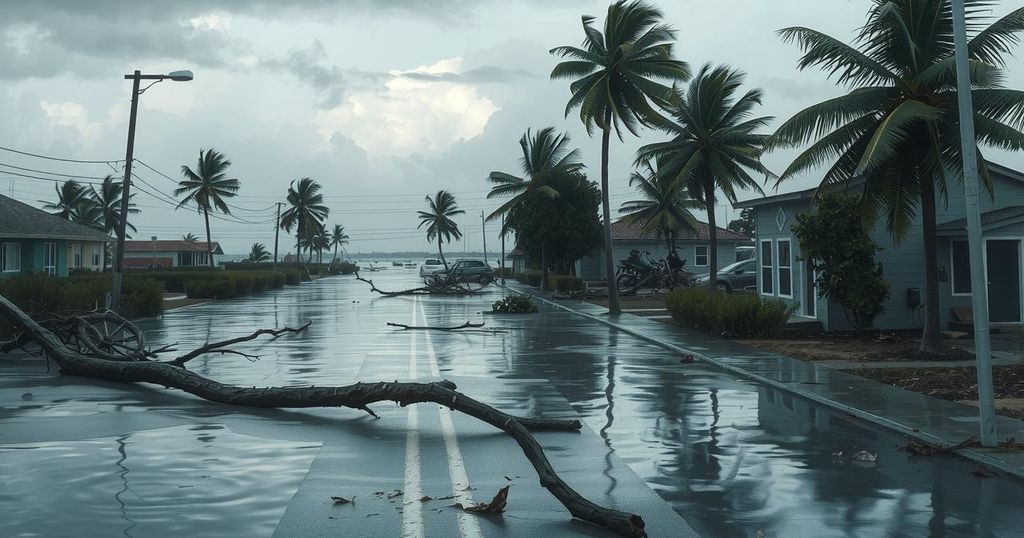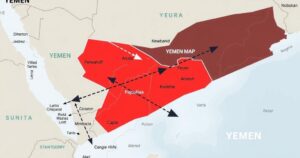Cleanup Begins After Hurricane Erick Strikes Southern Mexico

Southern Mexico begins cleanup after Hurricane Erick, a Category 3 storm, caused significant flooding and power outages. Major towns, like Puerto Escondido, saw residents working to clear streets, with no reported casualties. Schools and ports closed in Oaxaca and Guerrero, while the storm weakened and dissipated. Previous storms remind the region of similar risks.
In the wake of Hurricane Erick’s impact, cleanup efforts began in southern Mexico on Thursday. The storm, initially classified as a Category 3 hurricane, struck the Pacific coast before losing strength as it moved inland. In the tourist hub of Puerto Escondido, residents joined emergency teams to clear flooded streets and remove debris. Thankfully, there were no reports of deaths or injuries, although the local population of about 30,000 faced substantial disruptions including power outages and loss of cellphone service.
Luis Alberto Gil, a local merchant whose shop was flooded, expressed his frustration over the storm’s severity, stating, “The water had never hit with this magnitude” in Puerto Escondido. To assist with the recovery operations, the government dispatched hundreds of troops and utility workers to the area. Erick subsequently weakened to a Category 1 storm,然而, the U.S. National Hurricane Center (NHC) cautioned that hazardous flooding rains and potent winds were likely to continue as it progressed northward.
In Oaxaca, maximum winds reached 125 miles per hour at the peak of the storm, later decreasing to 85 mph. Residents remain on high alert for potential flooding and mudslides as wind gusts continued and a dangerous storm surge loomed.
Meanwhile, schools, airports, and ports—including those at Acapulco—were closed, and non-essential activities were suspended in Oaxaca and Guerrero. Additionally, the storm’s effects were felt in Michoacan, Colima, and Jalisco. According to the NHC’s 1400 GMT advisory, Erick was forecasted to continue weakening and likely dissipate by Thursday night.
Despite some material damage reported, the civil protection agency indicated that there were no known fatalities as of lunchtime Thursday. They plan to carry out a comprehensive damage assessment once access to affected areas is feasible. It is worth noting that hurricanes are a seasonal occurrence in Mexico, peaking from May to November. Just last year, for instance, Hurricane Otis, a devastating Category 5 storm, ravaged Acapulco, resulting in numerous casualties.
In the Cituario region, President Claudia Sheinbaum advised residents to remain indoors, particularly those in vulnerable areas such as low-lying regions and neighborhoods near rivers. Approximately 2,000 emergency shelters were established throughout Chiapas, Guerrero, and Oaxaca prior to the storm’s arrival.
On the ground in Puerto Escondido, while some restaurants remained closed post-storm, a handful of determined tourists chose to ride out the storm. A bit further up the coast in Acapulco—around 250 miles north—locals complied with safety warnings, resulting in a mostly deserted city as shops closed and tourist vessels were grounded. Many prepared ahead of the storm by stocking up on essentials like food, water, and gasoline.
As cleanup efforts commence following Hurricane Erick’s departure from Mexico’s coast, the focus shifts to recovery and damage assessment. While major damages occurred, no fatalities have yet been reported. Continued vigilance remains crucial as the storm’s residual effects on weather and safety persist. This weather event adds to Mexico’s history of storms, reminding us of the risks in vulnerable coastal areas.
Original Source: www.kpvi.com








